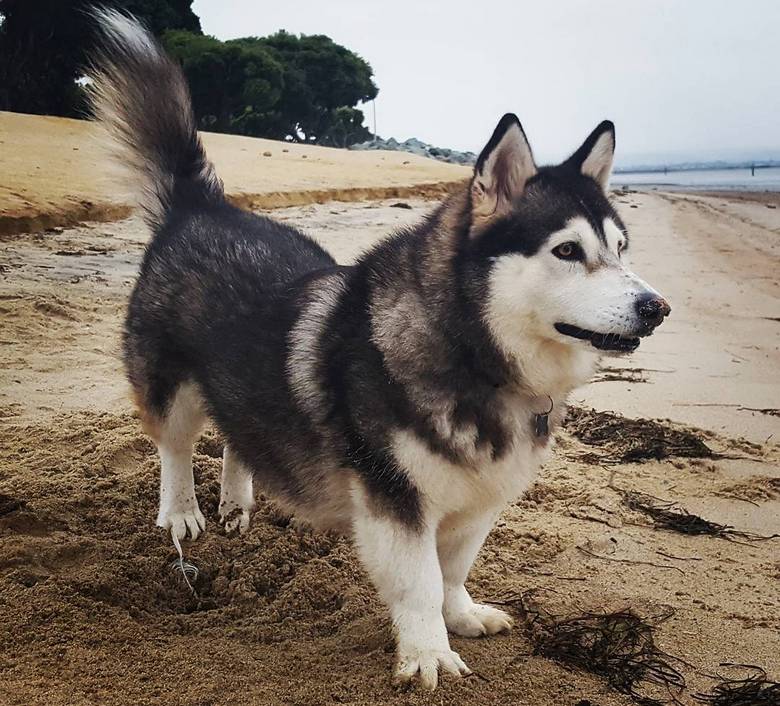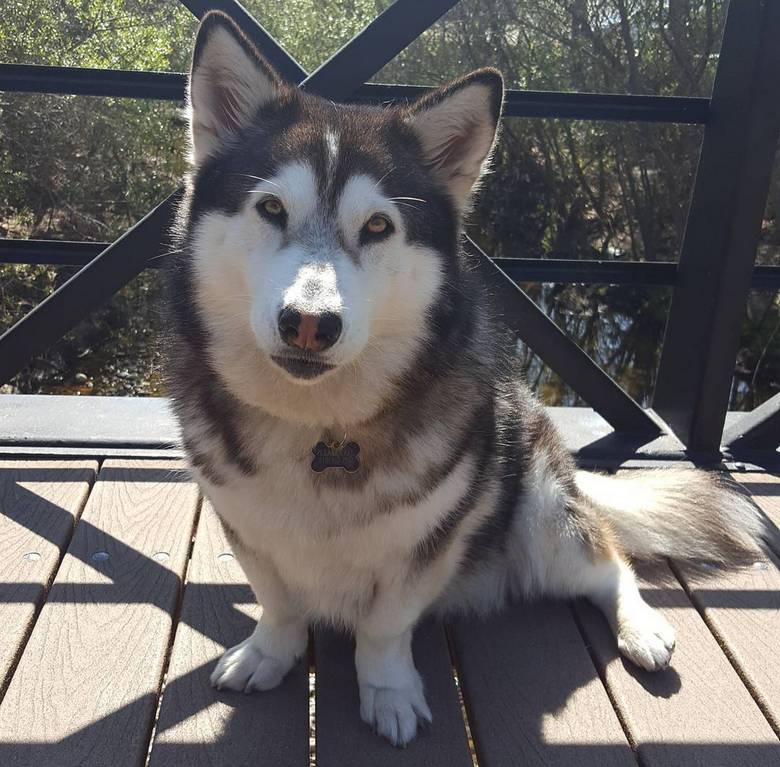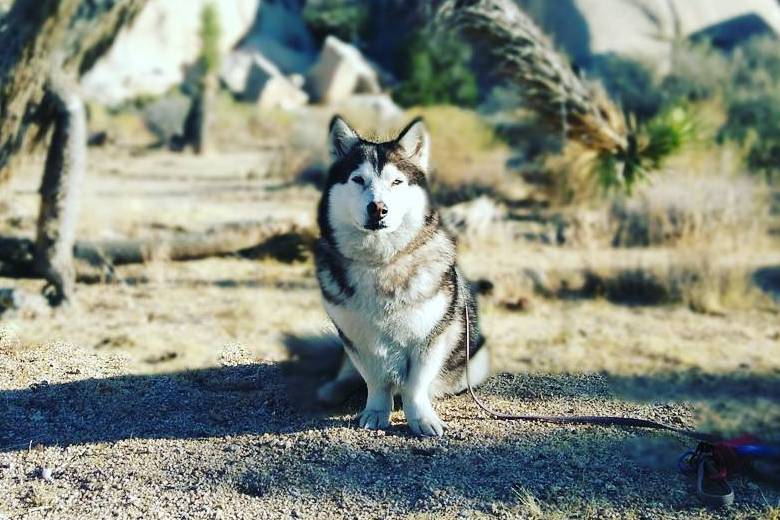I don’t know about you but here at Pet Comments, we think the Corgi Husky mix is one of the cutest beasts that had ever set foot on this planet!

From appearances alone, you can tell it is the result of breeding of two recognizable breeds: a Welsh Corgi (either a Cardigan or Pembroke Corgi) and a purebred Siberian Husky. Since it is a crossbreed, it isn’t registered by the American Kennel Club or any other major organization. Feel free to call them Corgski, Horgi, Siborgi or any creative name you can think of! Corgski is catchier so let’s call them that.
This designer breed is making a name for itself and has achieved an ever-increasing fan base. Of course, who wouldn’t love this small, fluffy teddy bear?
What Does a Corgski Look Like?
Now, let’s delve into the specifics of this designer breed. Sure enough, you will find Corgskis irresistibly charming!
Distinctive Features
As expected of a crossbreed, the Corgski will have a bit of variation. Regardless, there are three physical traits that are ever present in a Corgi Husky mix. A Corgski will always have the lupine facial structure of a Siberian Husky, as well as the iconic stubby legs and elongated back of a Welsh Corgi.
Size and Weight
Corgskis are bantam in stature but genetic factors affect how much they could potentially grow.
If the husky genes dominate, you will have a chunkier and heavier dog that can reach a full height between 15 to 18 inches. A Corgski this size can weigh up to 50 pounds. On the other hand, a Corgski with more corgi genes, may not even reach a foot!
Do take note that your pup’s diet and level of exercise have a decisive role in determining his weight.
Coat and Color
The Welsh Corgi flaunts a glossy medium-length coat. The Siberian Husky, on the other hand, is known for its velvety-soft double-coat.
Depending on which parent your pup takes after, it may have dominant features of the Siberian Husky or of the Welsh Corgi. However, it is almost guaranteed that a Corgski will have a bushy long-length coat.
Moreover, the Corgski’s fur comes in an array of stunning colors such as apricot, brindle, jet black, copper, sable, tan, and white. Some Corgskis have patches or multiple colors in its coat, while others are made up of different shades of one color.
Eyes and Markings
There is a chance that the dam could produce an offspring with markings similar to a Siberian Husky. You’ll never know what you’re expecting in a crossbreed!
Once in a blue moon, a pup could also have heterochromia iridum. Being bi-eyed or split-eyed is nothing uncommon in Siberian Huskies.

Temperament
Siberian Huskies are notable for their cunning and vigilant nature, which stems from their ancestry as working animals in a brutally cold tundra. They have strong instincts, high stamina, and are particularly vocal. Their excessive barking can cause a community meltdown if you let it.
From the Welsh Corgi’s side, you have a gutsy, caring pooch. Due to their ancestry as herding animals, Corgis are hardwired into ushering the family and are upset when left alone for extended periods. Even Queen Elizabeth’s corgis are often spotted trailing behind her. But as expected of small dogs, they can be very assertive to other animals. Hence, early socialization is a must to prevent problems in the future.
It is safe to stay that a Corgski will have a mishmash of these traits. Considering the Corgski’s working and herding lineage, this furry munchkin has a big heart and a heightened sense of responsibility despite its size. The mischievous side of the Husky paired with the playfulness of the Corgi will only amplify the bright, charming personality of the Corgski. There is never a dull moment with this dog around!
Health Concerns
Be sure you know what potential health issues await your furry munchkin so you can find ways to prevent it.
1. Degenerative Myelopathy
Canine degenerative myelopathy is a disorder that can lead to immobility in dogs. It occurs when the tissue of the spinal cord is damaged. So far, the cause remains unknown but it commonly affects Welsh Corgis and German Shepherds.
2. Hip Dysplasia
Hip dysplasia is a genetic disorder to watch out for in the Husky side. It is characterized by an abnormality in the development or structure of the hip joint, which can lead to coordination problems as it degenerates over time. Regular exercise, a high-quality diet, and an orthopedic bed can help alleviate its symptoms.
3. Intervertebral Disc Disease
Corgskis are genetically predisposed to a list of back problems because of the elongated body and short legs they inherited from the Welsh Corgi. These include Intervertebral Disc Disease or commonly known as a slipped disc. IDD occurs when the fibrocartilaginous disc, which serves as a cushion between all of the vertebrae of the spinal column, bulges and pushes the nerves of the spinal cord. It causes severe neck and back pain and will progress to hind limb paralysis. It is crucial to keep your Corgski’s weight in check; otherwise, excess weight will add more strain to his backbone.
4. Obesity
It is sometimes hard to tell whether a Corgski has gotten too fat since they always look chubby at best. But if your vet says he is, he certainly is. The loving solution is to put your pooch on a low-calorie diet, which is often “prescription-only” products supplied by vets.

Lifespan
A Corgski has a life expectancy of 12 to 15 years, provided that your pooch is well taken care of and is kept healthy with quality food and regular exercise.
Maintenance
Food
The Corgski tends to take after the size of the Welsh Corgi. They can clock in at 20 to 50 pounds when fully grown. If we settle in the middle at 30 pounds, your pooch would require 900 calories per day.
Be sure to feed your pooch high-quality food with appropriate amounts of energy-giving carbohydrates, muscle-building proteins, and healthy fats. You could feed your Corgski moist dog food, kibble, home-cooked meals, or a combination of the three, just as long as it meets your dog’s daily nutritional needs. Thankfully, a majority of dog food manufacturers include a feeding guide in their packaging to make it easier for you to calculate the amount you need to feed your pooch.
But if your dog has special needs or has gotten overweight, we suggest you speak to your veterinarian.
Grooming
A Corgski will shed pet hair in small quantities all year round. If your pooch has taken after the fluffy double-coat of the Siberian Husky, he will display a moderate to heavy molt, especially in the spring when the thick winter coat is being replaced by a light summer coat. Therefore, be ready to encounter tumbleweeds of fur during this time of the year. Either way, you will need a good old fashioned brush if you need to keep your pooch’s coat neat and tidy.
In addition, weekly baths are recommended to wash away grime, dust, dander, and loose fur before your Corgski has a chance to scatter it all around your house. Bathing your dog is also a good opportunity to check your dog for physical changes. Needless to say, it is also important to brush your Corgski’s teeth from puppyhood onwards to optimize dental health. Nail trimming should also start gradually when your Corgski is still a pup. Also, don’t forget to keep those cute ears squeaky clean!
Exercise
Corgskis are a ball of energy! It comes as no surprise since both its parent breeds are energetic working dogs – the Siberian Husky as a sled dog and the Welsh Corgi as a cattle herder.
However, strenuous activities are not suitable for Corgskis as their body type makes them highly susceptible to trauma. Don’t expect them to have the same stamina and physique as a purebred Siberian Husky.
A total of sixty minutes of fun and games per day is enough to keep your Corgski fit. A pup, on the other hand, should be walked for five minutes per month of age.
Take Away
The Corgski is a popular choice among dog owners who want a husky but are incapable of managing its full size. After all, a Corgski is a Siberian Husky trapped in a Welsh Corgi’s body… or a corgi in disguise as a husky!
It is normal for a Corgski to shed fur frequently, especially if your pooch has inherited the husky’s fluffy double-coat. Be sure not to let your pooch give grooming the brush off if you want to keep him looking sharp. As for health concerns, they can be kept under control with the right attention and proper care.
So, if you are seriously considering one of these furry munchkins, be sure to socialize them from a tender age to prevent assertiveness towards other humans and pets. They can be jealous and clingy if you allow them to! Then again, negative traits can be tackled with early and consistent training. If you get to grips with that, your furry munchkin will grow into a fun-loving companion!
Further readings:
- George Hoppendale, Husky Corgi Complete Owners Manual (Find This Book)